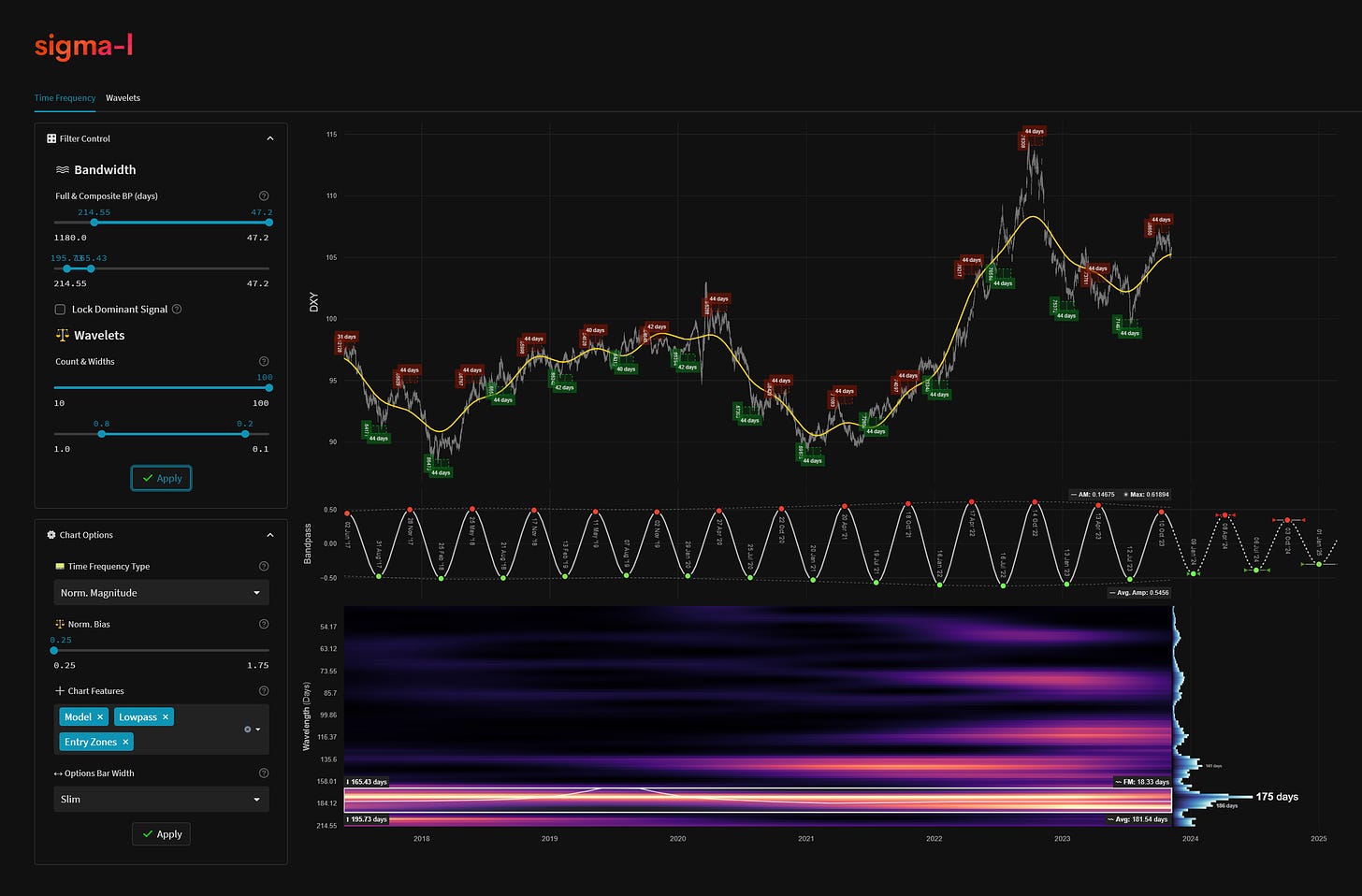US Dollar Index - 8th November 2023 | @ 182 Days
'B' class signal detected in US Dollar Basket / Index. Running at an average wavelength of 182 days over 13 iterations since June 2017. Currently moving down.
ΣL Cycle Summary
In this new addition to our Dollar Index (DXY) analysis we can now lock into what is notionally the ‘20 week nominal’ wave in this instrument. More coherent and spectrally separated than the recently reported wave at around 78 days, this is one of the main, medium term periodic drivers of price over the last 5 years. Price has likely peaked in line with the cycle peak and we anticipate the next trough of this component to occur very late in the year or towards the middle of January 2024, see targets below for further details.
Current Signal Status
Defining characteristics of the component detected over the sample period.
Detected Signal Class: B - learn more
Average Wavelength: 181.54 Days (25.94 weeks)
Completed Iterations: 13
Component Yield Over Sample: 40.28% - learn more
Time Frequency Analysis
Time frequency charts (learn more) below will typically show the cycle of interest against price, the bandpass output alone and the bandwidth of the component in the time frequency heatmap, framed in white. If a second chart is displayed it will usually show high-passed price with the extracted signal overlaid for visual clarity.
Current Signal Detail & Targets
Here we give more detail on the signal relative to speculative price, given the detected attributes of the component. In most cases the time target to hold a trade for is more important, given we focus on cycles in financial markets. Forthcoming trough and peak ranges are based upon the frequency modulation in the sample (learn more).
Phase: Moving Down
FM: +- 18 Days
AM: 0.14675
Next Trough Range: December 22nd, 2023 - January 27th, 2024
Next Peak Range: March 21st - April 26th, 2024
Sigma-L Recommendation: Late Sell
Time Target: ~ 9th January, 2024
Current Signal Phase
This is ‘how far along’ the cycle is in it’s period at now time and is related to the predicted price action direction.
Current Signal Frequency Modulation (FM)
This is how much, on average, the signal detected varies in frequency (or wavelength) over the whole sample. A lower variance is better and implies better profitability for the component. Frequency usually modulates relatively slowly and over several iterations.
Current Signal Amplitude Modulation (AM)
This is how much the component gains or loses power (price influence) across the sample, on average. Amplitude modulation can happen quite quickly and certainly is more evident than frequency modulation in financial markets. The more stable the modulation the better.







thank you David. What is your source for dxy time series?